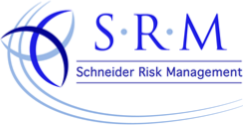|
As EHS professionals, many of us have been asked to work from home. Our jobs are essential even vital to the work that is done, but they are not necessarily critical to getting the product made. In other words, we don’t have to be on the front line creating the product. We are not at the press making sure the product is made correctly or operating an ammonia system to ensure that it functions properly. Of course, I’m making an assumption here, that you are not able to do some or most of your regular duties at the plant and have been asked to work from home. To quote the Talking Heads, “You might ask yourself,” What should I be doing during this time away from the plant? How can I be most useful? What needs some long overdue attention? How can I stay in contact with and support the production supervisors concerning routine and COVID-19 safety concerns and questions? Well, here are a couple of ideas.
chatting with them as often as you can. Talk about accidents, die changes, preventative maintenance and other challenges through face-to-face via video conferencing. Using these systems takes a little getting used to but once everybody gets the hang of it, video-conferencing is a powerful tool in your communication arsenal. Depending on your computer platform, phone OS, etc. Facetime, Skype, Zoom, Microsoft Teams and other options are available to you. Review, Revise and Update Safety and Environmental Plans and Procedures Haz Com Plan, LOTO Program, BBP Exposure Control Plan, Emergency Action Plan, the list goes on. It is always a challenge to get these documents read and updated annually or every two years to make sure that contact and lead personnel information is current, emergency equipment lists are still accurate, and procedures still make sense for today’s operations. So this new situation may be a good opportunity to take a good solid look at your existing plans. Does it read well? Is it understandable? Or do you need to have someone take a red pen to it so it is easier to read and understand? Now may also be a great opportunity to streamline and combine plans where you can. For example, required storm water management plans (SWPPP) and oil spill prevention plans (SPCC) tend to have allot of overlapping requirements. Why not combine the two and operate under one plan instead of two? It just might be easier to manage. If you have a hazardous waste contingency plan, maybe you can combine it with your emergency action plan (EAP). Again, lots of overlap between the two plans. When you are doing this, It is also a good opportunity to contact the supervisors and managers and get their input over a video chat. They’ll appreciate it and you won’t be working in a vacuum. Dust off the Emergency Response Plan (ERP) Speaking of emergency plans, one such plan that always needs personal attention is the EAP or Emergency Response Plan (ERP), depending on where you fall in the regulations. Most of the time we don’t need to use these plans, which is wonderful. But, when we do need to use them, they need to accurate. Contact information must be up-to-date. Procedures must be appropriate. People need to know what they should do. These plans minimize problems, prevent issues from becoming catastrophes, and most importantly, they keep people safe. When was the last time you reviewed your facility’s ERP / EAP? Emergency response plans and/or procedures (ERP, EAP, Hazardous Waste Contingency plan) are required by a number of regulations:
Typically, plans must be in writing, kept in the workplace, and must be available to employees for review. Other significant requirements include:
It is also important to note that the EAP is supposed to cover the entire facility even when there is a certain plant operation that requires special attention. For example, ammonia refrigeration facilities are covered by the PSM Standard and therefore are required to address emergency planning and response (29 CFR 1910.119(n)). This includes, “an emergency action plan for the entire plant,” not just the ammonia system. Sometimes we see companies prepare a ERP for the ammonia system and an EAP for the rest of the plant. The problem here is that you now have two separate plans to maintain and there should only be one for the whole facility. In addition, OSHA says that EAPs must be reviewed with employees when the plan is developed, or when an employee’s responsibilities change or when the plan changes. But it doesn’t say how often the Plan itself must be reviewed. Now might be a perfect time.
The OSHA and MIOSHA websites have an abundance of information as well as eLearning materials. The National Safety Council (NSC) and the American Society of Safety Professionals (ASSP) also have online classes available. Of course, there is also learning by traditional methods such as reading a book. Regulatory Links Here are some helpful links to help you in your EAP/ERP review and continuing education:
Learning Links:
(231) 288-1076
2155 W. Sherman Blvd. Muskegon, Michigan 49441
0 Comments
According to PHITAmerica.org, the PHIT Act, which stands for Personal Health Investment Today, is proposed federal legislation that would allow Americans to use pre-tax accounts like Health Savings Accounts (HSA) and Flexible Savings Accounts (FSA) to pay for qualified fitness expenses including memberships, classes and personal training appointments.
The PHIT Act will provide an incentive for you and your children to get fit which will help prevent healthcare costs related to preventable chronic diseases. PHIT would allow you to put up to $2,000 a year into an account and help you save on yearly expenses related to physical activity! PHITAmerica.org states, “the PHIT Act will put prevention in our healthcare system. What we have today is basically "sick care". PHIT will help promote "wellness care" or true healthcare.” If you would like to find out more about the PHIT Act and how its benefits, visit this website. |
|




 RSS Feed
RSS Feed
